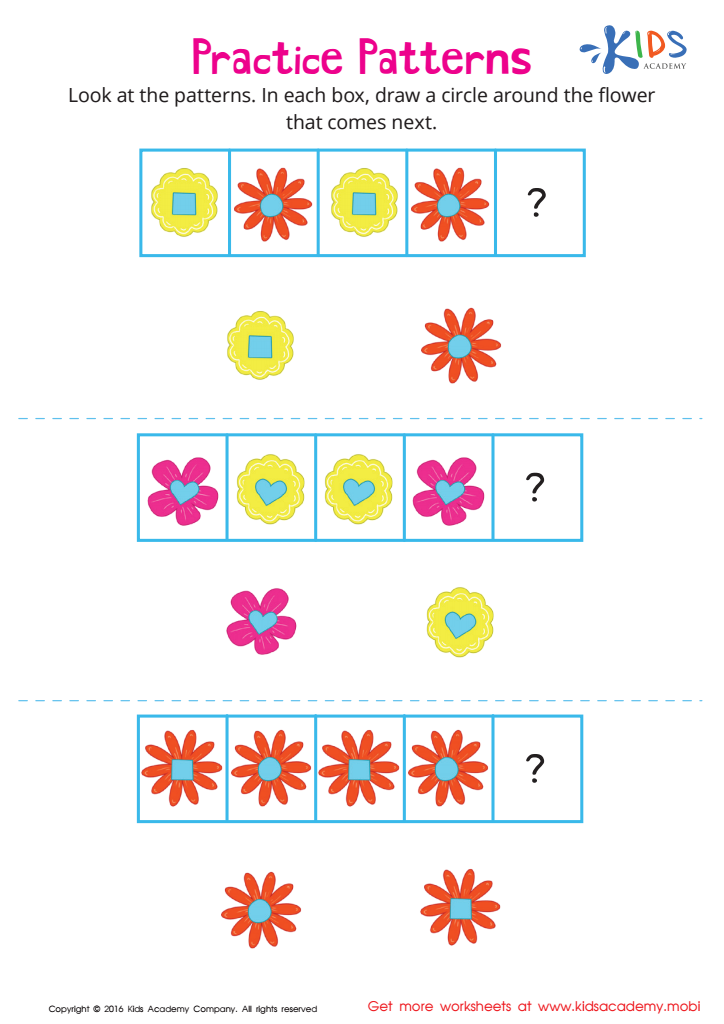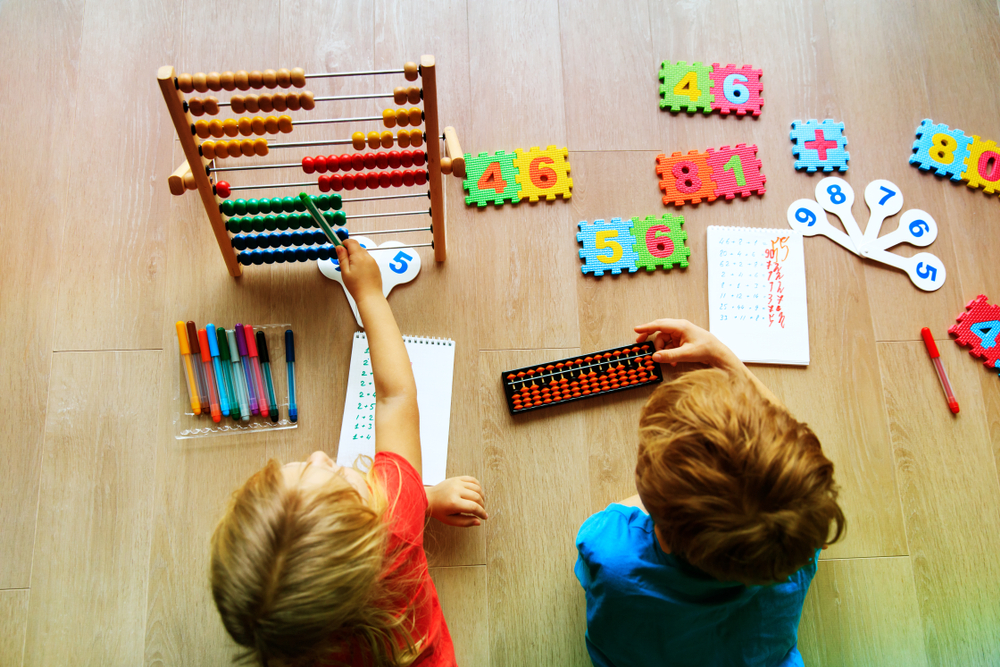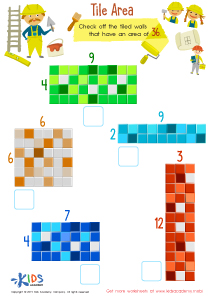Pattern recognition Normal Matching Worksheets for 5-Year-Olds
6 filtered results
-
From - To
Our Pattern Recognition Normal Matching Worksheets for 5-Year-Olds are designed to foster critical thinking and problem-solving skills in young learners. Engaging and vibrant, these worksheets help kids identify, match, and predict patterns, laying a foundation for math and reasoning proficiency. Ideal for preschoolers, they support cognitive development, improve attention to detail, and enhance visual discrimination. Each activity is crafted to make learning fun and interactive, helping children gain confidence in their abilities. Perfect for classroom use or at-home practice, these worksheets turn education into an enjoyable adventure, setting the stage for lifelong learning success.
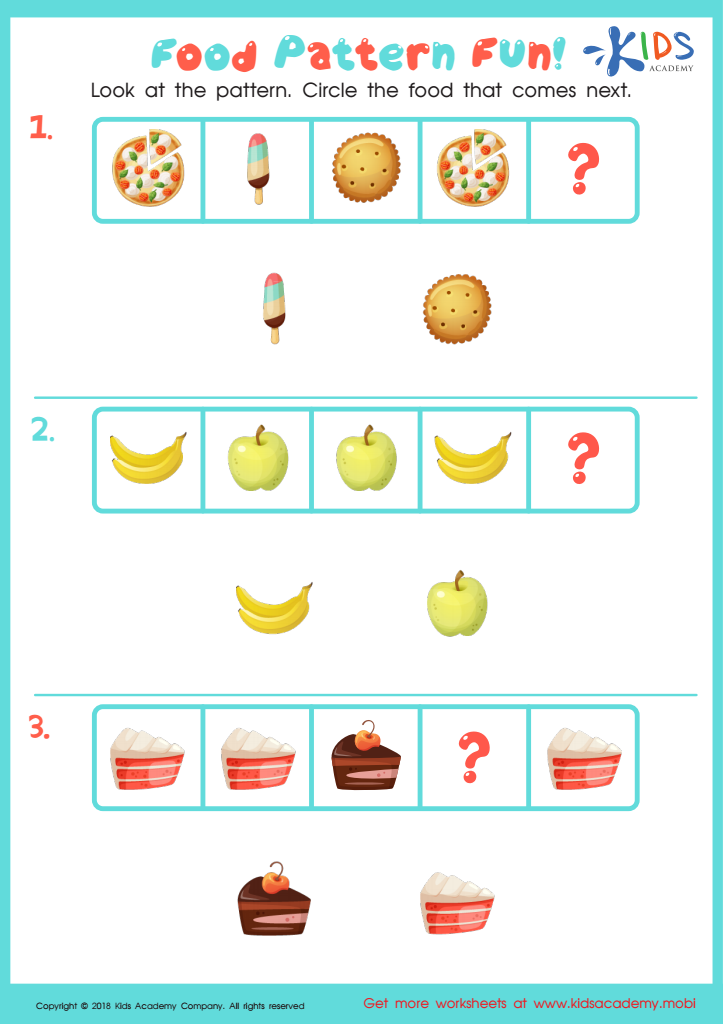

Food Pattern Fun Worksheet
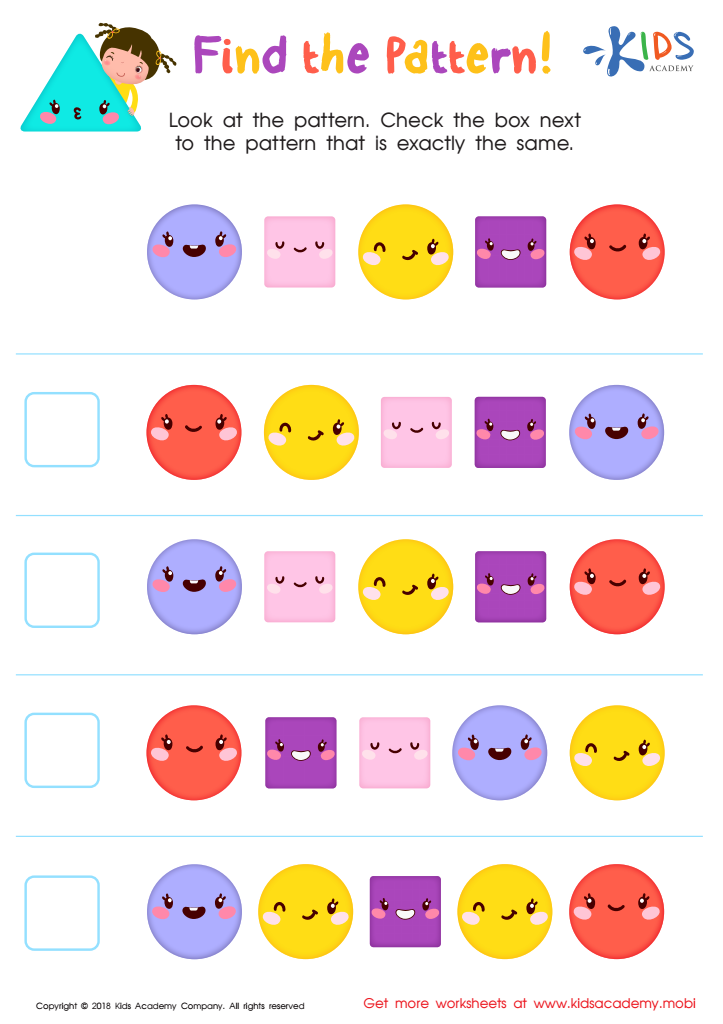

Find the Pattern Worksheet
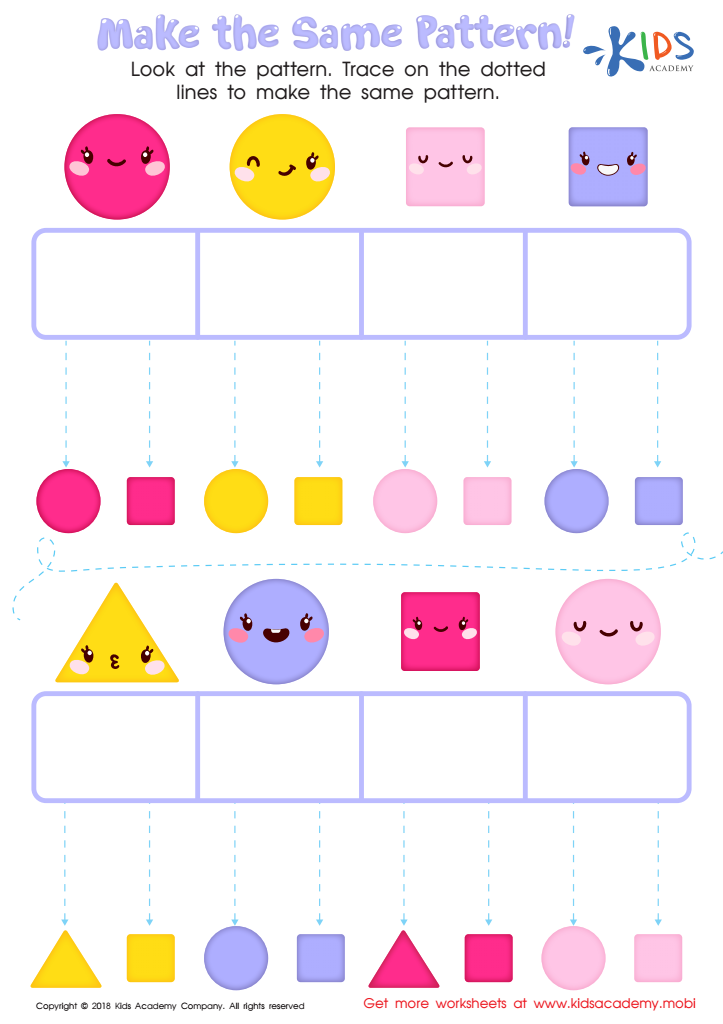

Make the Same Pattern Worksheet


Logic Game Sorting Worksheet
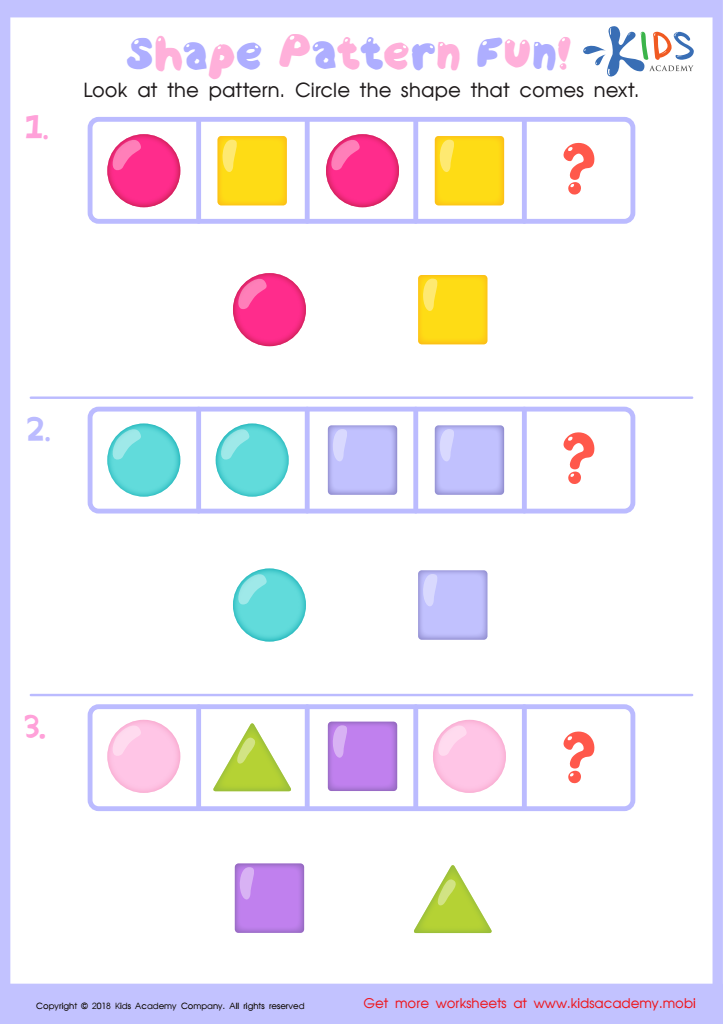

Shape Pattern Fun Worksheet
Pattern recognition and normal matching are foundational skills that are critically important for 5-year-olds, and both parents and teachers should actively nurture these skills. At this developmental stage, children's ability to recognize and replicate patterns supports cognitive development, including critical thinking and problem-solving skills.
When children work on pattern recognition, they learn to observe and identify regularities and irregularities in sequences, enhancing their attention to detail. Patterns often form the basis of many learning activities in math, such as understanding numbers, identifying shapes, and comprehending sequences. For instance, recognizing a sequence like red-blue-red-blue helps in understanding numerical concepts and setting the groundwork for more complex mathematical tasks such as addition and subtraction.
Normal matching activities also bolster memory, encourage logical thinking, and stimulate linguistic abilities by helping children categorize and classify objects based on similarities and differences. This pedagogical approach translates to more than just academics. Life skills such as organizing daily activities, planning sequences of events, and even literacy skills, like recognizing letter patterns and word structures, are all influenced by a well-developed understanding of patterns and matching.
By investing time and resources in developing these skills, parents and teachers lay a framework that prepares children for future academic achievements and day-to-day problem solving, making it a crucial aspect of early childhood education.
 Assign to My Students
Assign to My Students
